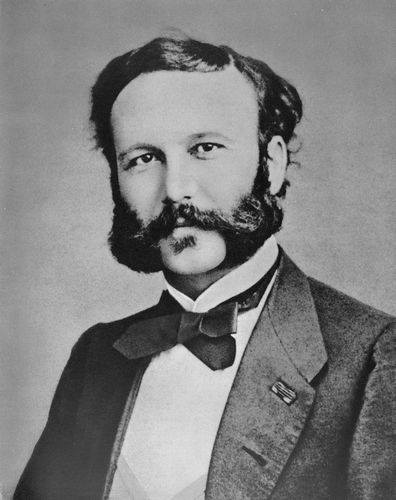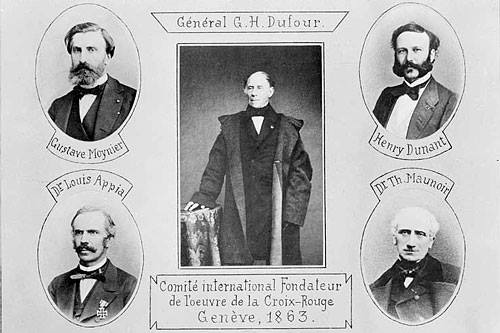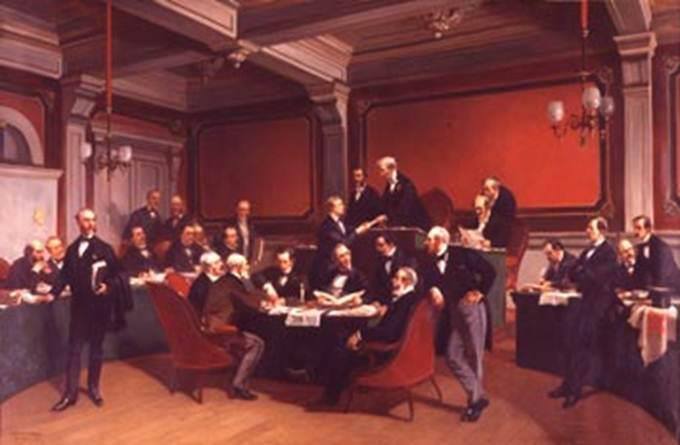The International Red Cross/Red Crescent Movement, ICRC and IFRC
The history of the Movement that we know today as the International Red Cross and Red Crescent Movement begins in 1859
One of the most violent battles at the time, the one between the Franco-Sardinian army on one side, and the Austrian army on the other, happened near the small town of Solferino, in the North of Italy, on June 24th of 1859. Over 40 000 wounded and dead were left on the battlefield after the clash.
There was no one to bury the dead, and no one could aid the wounded or at least ease their final moments. This was the result of lacking capacities of the army medical corps of that time.
At the time, by chance, a Swiss businessman by the name of Henry Dunant, who had endeavors in that part of Europe, found himself near the battlefield. Horrified by what he saw on the battlefield, Henry Dunant forgot about his work and started to help the unfortunate.
Soon he realized that he could not do much alone, and he started to call and gather the people of the nearby town of Castiglone, as well as from the surrounding villages, who did not take part in the armed clashes, to aid him in helping. A great number of the population responded to that call. This event is considered the world’s first organized action of providing aid.
Members of the armed forces, officers and soldiers of the victorious Franco-Sardinian army, at first, disapproved the actions of Dunant and the people, accusing them of aiding the enemy that they had defeated with great difficulty. Henry Dunant replied to the generals: “We are all brothers in suffering”. That is how he established the base of humanitarian action - impartiality.
Henry Dunant and the people of Castiglone turned churches into hospitals. They provided the wounded with all the care that was possible in the given circumstances. They buried the dead, documenting information so that they could let their families know (the beginnings of the Tracing Service).
Upon return to his native Geneva, Dunant did not forget Solferino. Troubled by memories, he felt that he had to do something to improve the fate of victims of war. In 1862 he published the book A Memory of Solferino.

In the book, besides describing the happenings and atrocities that he had witnessed, he also stated two ideas: to form “aid societies” in the time of peace, which would assemble and train volunteers to help the wounded of the waring armies, and the adoption of an international agreement that would acknowledge and secure the protection for those societies.

His efforts began to take form when he gained the support of four esteemed citizens of Geneva, with whom he founded the informal Committee of the Five on February 17th in 1863. Shortly after the founding, the Committee held an international conference on October 26th in Geneva, in which 16 states took part, The Conference recommended the protection of army medical corps in war, as well as of medical personnel, the wounded and the sick. Just before the beginning of the Conference, the Committee of the Five constituted itself as the International Relief Committee for Injured Combatants (today known as the International Committee of the Red Cross). In this way, the first idea of Henry Dunant came true.
Influenced by that idea, national societies of the Red Cross for aiding the injured of armies at war were formed, so by mid-1864 10 societies were founded: Wurtemberg, Oldenburg, Mecklenburg-Schwerin (in today’s Germany), Prussia, Belgium, the Netherlands, Denmark, France, Italy, and Spain.
Initiated by the Committee, in 1864 in Geneva an international conference was held, in which the representatives of 16 states as well as the representatives of the International Committee took part. During the conference on August 22nd 1864, the Geneva Convention for the Amelioration of the Condition of the Wounded and Sick in Armies in the Field was adopted, and it was ratified by almost all participating states in the following years.

The symbol of the Red Cross was decided as the distinctive sign for recognizing and protecting medical personnel, and adopted by the International Committee as its sign.
The Serbian Society of the Red Cross was founded on February 6th 1876 in Belgrade, and it is one of the first 15 organizations founded in the world.
